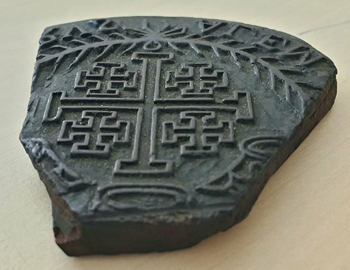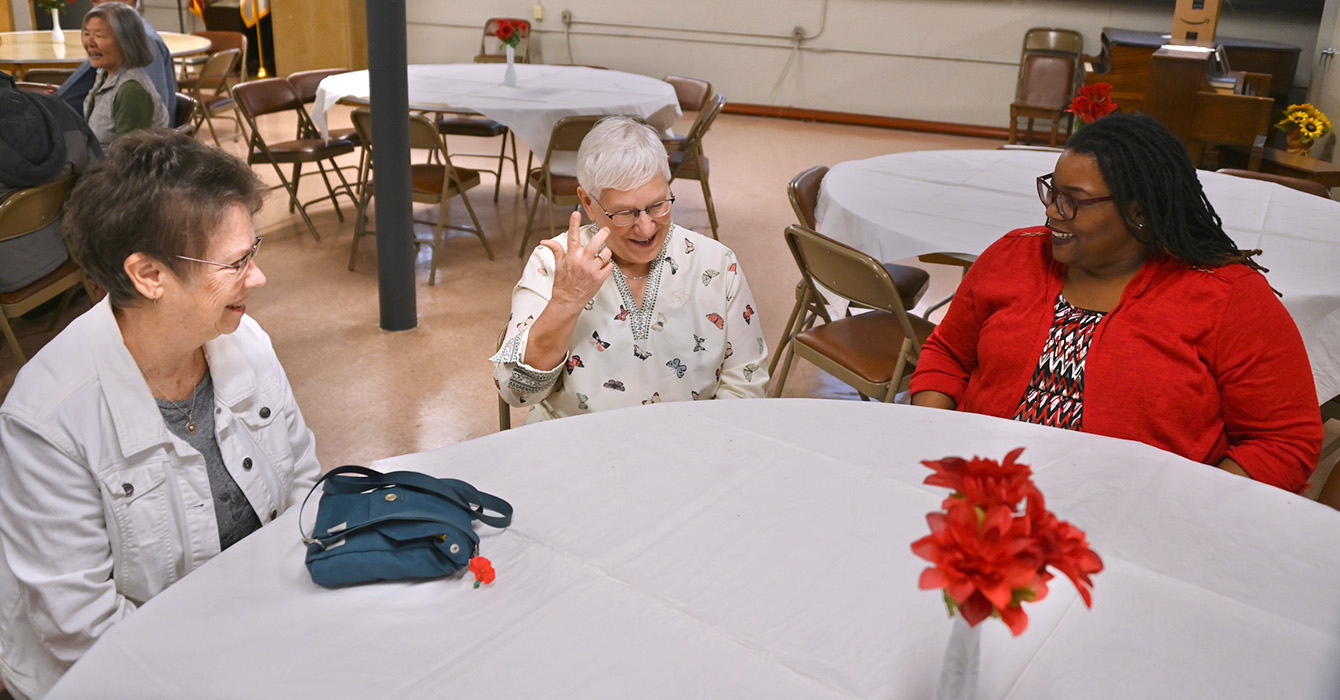“And just as he was coming up out of the water, he saw the heavens torn apart and the Spirit descending like a dove on him.” -- Mark 1:10 (NRSV)
Sometimes, we just need a sign. I’ve always been a bit envious of the dove at Jesus’ baptism. Jesus had a clear, bold confirmation of his baptism in the Jordan.
Me? I remember my baptism as a teenager, but there was no object, no sign, no thing to hang on to.
Augustine of Hippo wrote that sacraments are “visible signs of invisible realities.” The Book of Common Prayer speaks of “outward and visible signs of inward and spiritual grace.” I’ve longed for an outward sign of the inward transformation of my baptism. Sure, I know that I’ve been sealed in the waters of baptism, and the mark of Christ on my life is indelible. But sometimes, we just need a sign.
I am not a rebellious person. My far-more-interesting sister teases that I had a rebellious weekend once in the late ’90s when I got my ears double-pierced at the Carousel Mall in Syracuse, New York. Otherwise, I lead a pretty tame existence.
And yet this July, amid renewed violence in Israel and Palestine, I found myself sitting in a second-floor apartment in the Old City of Jerusalem, trusting a total stranger to tattoo my arm.
Through the Jaffa Gate, past the storefronts selling rosaries and pottery and baklava, down the narrow Christian Quarter Street before you reach the Church of the Holy Sepulcher, two fellow pilgrims and I found a door marked only with the number 80. Up the stairs to a small room with thick plaster walls, we met Wassim Razzouk, whose family has been tattooing for at least 700 years, first in Egypt and then in Jerusalem.
As early as 1680, Wassim notes, Lutheran theologian Johannes Lundius wrote about Christians who made pilgrimages to the Church of the Holy Sepulcher. They sought marks on their bodies “because of the special sacred awe associated with the place and because of the desire to prove that they had been there.”

Since getting this pilgrim’s tattoo, other pilgrims have spotted it peeking out from under the sleeve of my respectable church-lady cardigans.
I met a Roman Catholic Army vet who was marked, along with some fellow soldiers, by Wassim’s father in 1965, his cross faded blue on top of leathery skin. I chatted with a young Armenian Orthodox Christian just returned from pilgrimage, her skin still pink and tender from the recent ink.
As one initially molded by the more Reformed side of the church, I’d always struggled a bit with the idea of the saints. At best, the saints were unfamiliar; at worst, they posed a potential distraction from the comprehensive salvation wrought in Jesus Christ. Yet I’ve never felt more physically connected to the anonymous company of saints stretching across time and culture than I have with this tattoo.
For some, tattoos are expressions of individuality. There are unwritten rules about not copying another tattooist’s designs. But our pilgrim tattoos are utterly unoriginal. While we know that famous pilgrims like Ethiopian Emperor Haile Selassie and King George V of England were also tattooed by the Razzouk family, thousands of faithful, anonymous women and men I will never know bear the same mark on their arm as I do.
Wassim’s grandfather, Yacoub Razzouk, was both a tattooist and a coffin-maker in the Old City. St. Paul asks the Christians in Rome, “Do you not know that all of us who have been baptized into Christ Jesus were baptized into his death?” (Romans 6:3). When I die, and all the markings of class and status and gender are stripped from my body, on my right arm will remain this sign.
The Heidelberg Catechism asks, “What is your only comfort in life and in death?” We answer, “That I am not my own, but belong -- body and soul, in life and in death -- to my faithful Savior, Jesus Christ.” I now have a sign of this truth.









